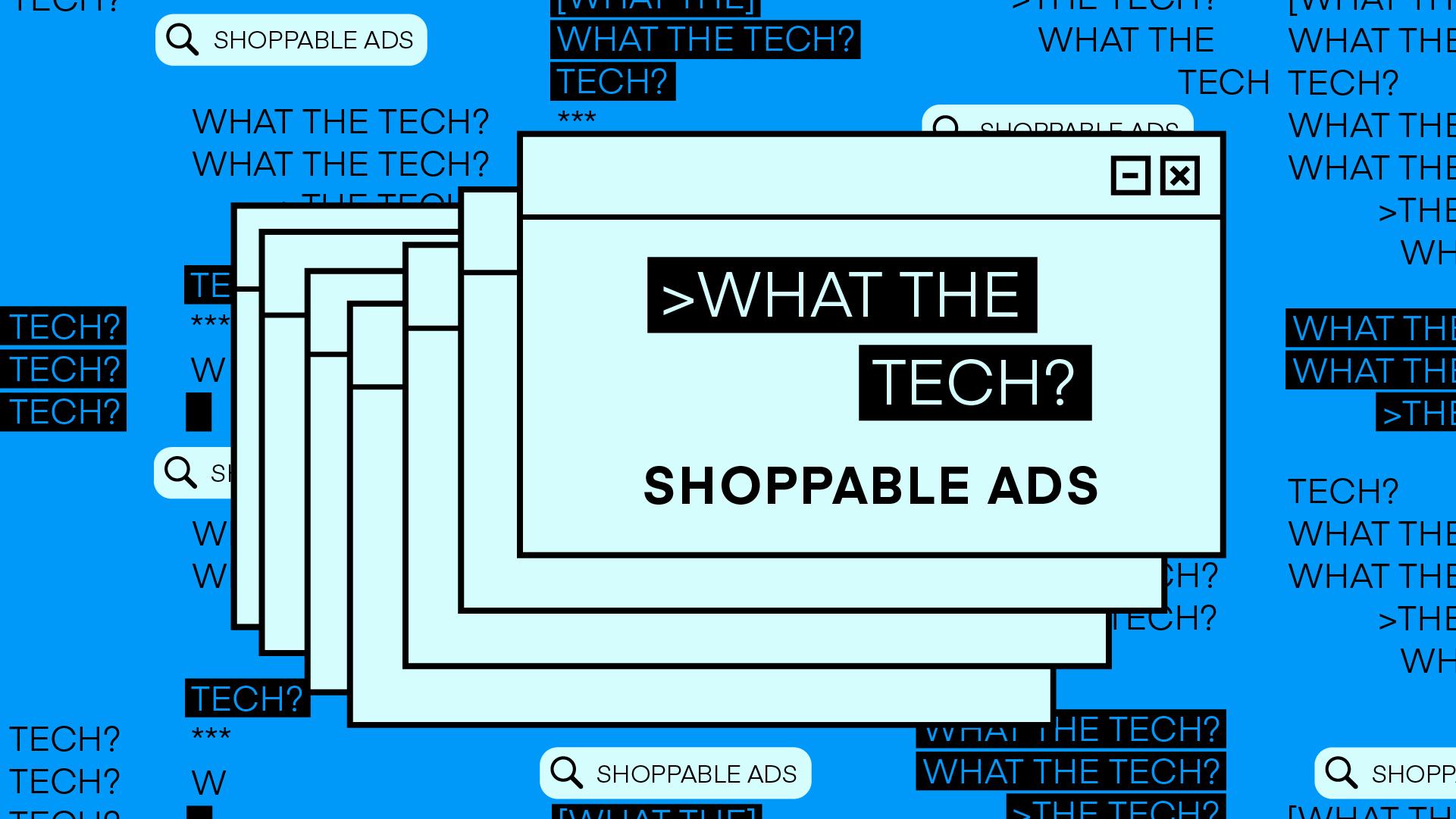What the Tech are shoppable ads?
How shoppable ads shrink the distance between impression and conversion.

There’s an old saying in advertising that goes, “Half the money I spend on advertising is wasted; the trouble is I don’t know which half.”
The phrase is often attributed to Henry Ford or J.C. Penney, but the general consensus is it was coined by John Wanamaker, a department store magnate at the turn of the 20th century. The ubiquity of the statement is a testament to how difficult it is to measure the effectiveness of an advertising campaign. That is, it’s difficult to draw a connection between a consumer viewing an ad (an ad impression) and the consumer subsequently buying the product being advertised (a conversion).
Or at least it used to be difficult, because now, with shoppable ads, the distance between impression and purchase is non-existent, and the adoption of shoppable ads is having a profound effect on how brands advertise.
What are shoppable ads?
Shoppable ads is one of the more literal terms in advertising jargon. Shoppable ads are, well, ads that are shoppable. Instead of having to remember the product being advertised and buy it at a store later, consumers can make the purchase directly from the ad they’re viewing.
Oftentimes, the consumer doesn’t even have to click-through a merchant’s website and go through the checkout process there. Many platforms that offer shoppable ads allow consumers to save their billing and shipping information to their account profile, allowing them to buy an advertised item with a single click.
Can you provide an example?
The most straightforward example of shoppable advertisements are the sponsored product links you see when shopping on Amazon. The ads are integrated into the shopping experience and designed to help consumers purchase the product immediately.
When we talk about shoppable ads, though, we mostly mean it in terms of platforms that aren’t specifically geared for shopping. Facebook, Google, Instagram and Pinterest all have myriad uses, and they all also offer shoppable ads. When you search “men’s brown shoes” on Google, you’ll be served a number of shoppable ads that encourage you to buy a new pair of Oxfords. On Pinterest, there are shoppable pins that allow you to buy the products featured in the image. Scroll Instagram and you’ll shoppable ads for T-shirts, nutritional supplements and any number of other goods.
I see these ads all the time. What’s the big deal?
We touched upon this earlier, but in the pre-digital days of advertising, it was considerably more difficult to judge the effectiveness of advertising. Digital advertising has made that process more precise, introducing a host of new ways to measure advertising effectiveness. With shoppable ads, the distance between impression and conversion is flattened to essentially zero, meaning brands can know for a certain if an impression is linked to a purchase. It’s a dream come true for a direct response marketer.
And in the grand scheme of things, shoppable ads are still new. YouTube didn’t integrate shoppable ads into its platform until last summer, for instance. So brands are still excited about and experimenting with the format.
There’s also the perception that shoppable ads induce more buying in general. By making it easier for consumers to buy the product being advertised, consumers are more likely to buy the product, the thinking goes.
Are there any other places we see shoppable ads?
Over-the-top (OTT) television — that is, TV that is consumed digitally, be it on a mobile device, desktop computer or through an internet TV device, such as Apple TV or Roku — is seen as the next frontier of shoppable advertising.
Already, brands are dabbling with the idea, placing QR codes in their ads that run on Hulu and other streaming platforms. It’s likely that in the coming years, consumers will be able to instantly purchase items advertised during their Handmaid’s Tale binge.
Seems like shoppable ads are a no-lose proposition. Are there any downsides, though?
It’s not a downside, per se, but one can fall in the trap of thinking that a shoppable ad is only valuable when it causes a consumer to buy the item, and that’s not necessarily the case.
A consumer can view a shoppable ad, not make a purchase, but later decide Yeah, sure, I do want those shoes after all, and then buy them from the brand’s website. The consumer was influenced by the shoppable ad, even though they didn’t buy from the shoppable ad. The old adage about now knowing how your advertising is working still applies.
Subscribe to The Current
Each week, The Current gives you a rundown of the biggest stories and latest trends from the world of data-driven marketing, including topics like Connected TV and the future of identity — all delivered directly to your inbox.